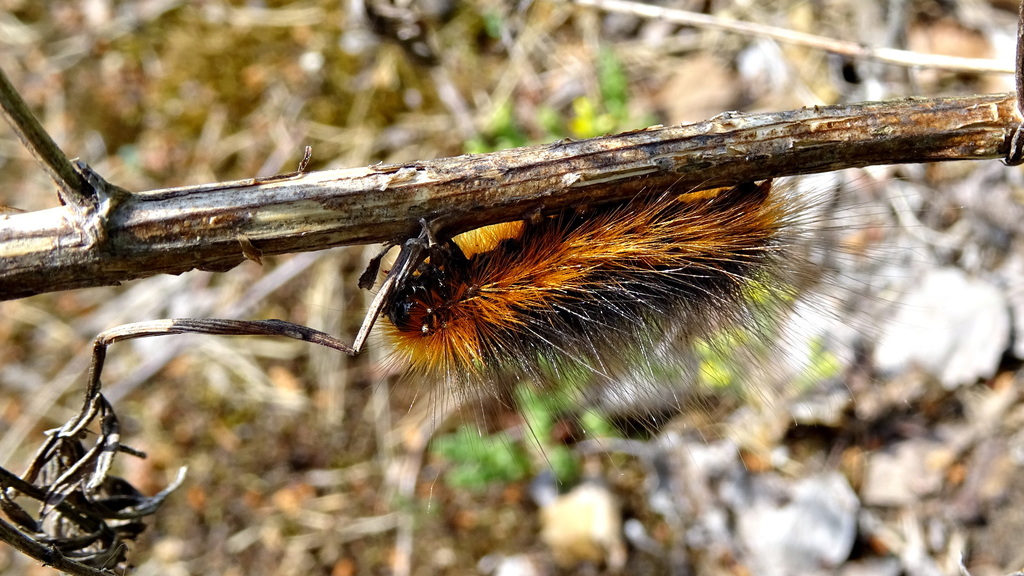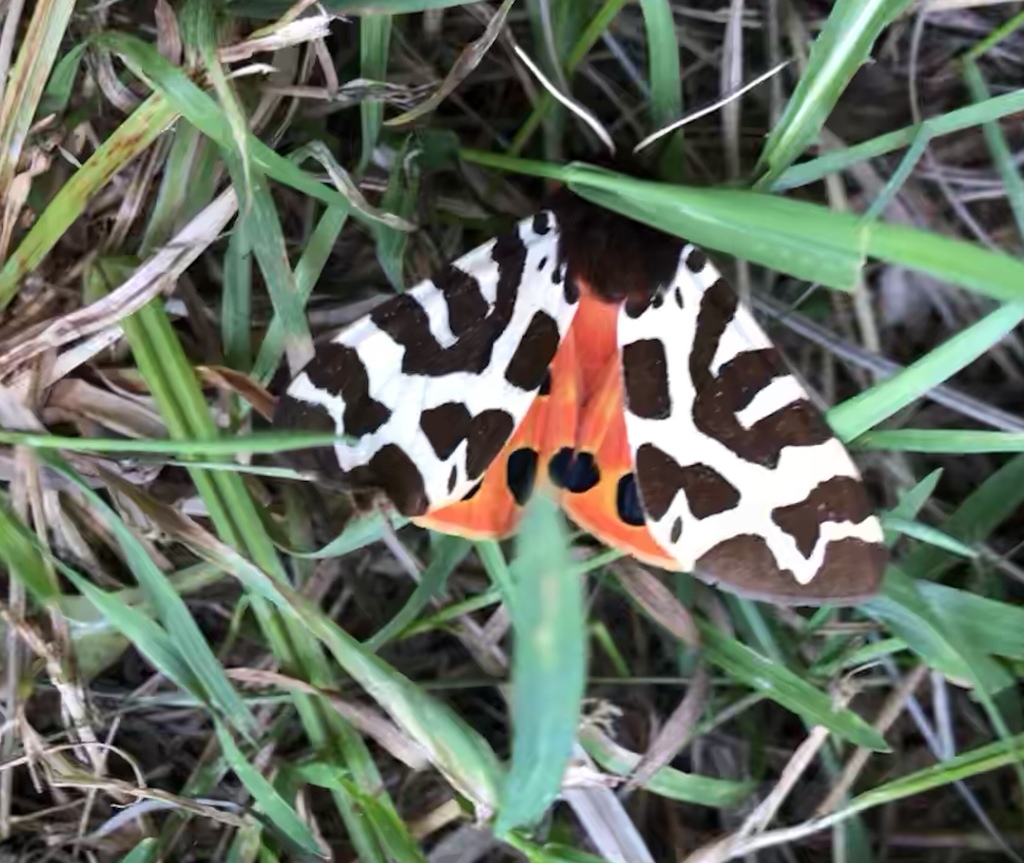Caterpillars on the move: Part 4
This is one of the best times of year for moth caterpillar spotting! Here is the first of four articles highlighting moths whose caterpillars you have a good chance of seeing. These moths overwinter as caterpillars and, with autumn upon us, they are on the move…
Garden tiger moth
This conspicuously plump and hairy caterpillar – often referred to as the ‘woolly bear’ – is quite common in the wider countryside where it feeds on many plants including ragwort, stinging nettles, dock leaves, dandelion and plantain. If seen, I advise not to pick it up because the hairs cause skin irritation.
Emerging from hibernation in the spring, they form a thin cocoon in vegetation on or near the ground.

Garden tiger moth caterpillar © Zdeňka Nováková
The adults fly mainly at night through June, July and August, but five similar British tiger moths are daytime flyers. All have bright colours that warn predators they are unpalatable. The garden tiger is the biggest, with a wingspan of 6.5cm. It is a species in severe decline and it is classified as a priority species in the UK Biodiversity Action Plan.

Adult garden tiger moth © wlw
Find out more on Butterfly Conservation’s website: Garden tiger moth.
Warden Mike
#MoreThanJustNightjars
